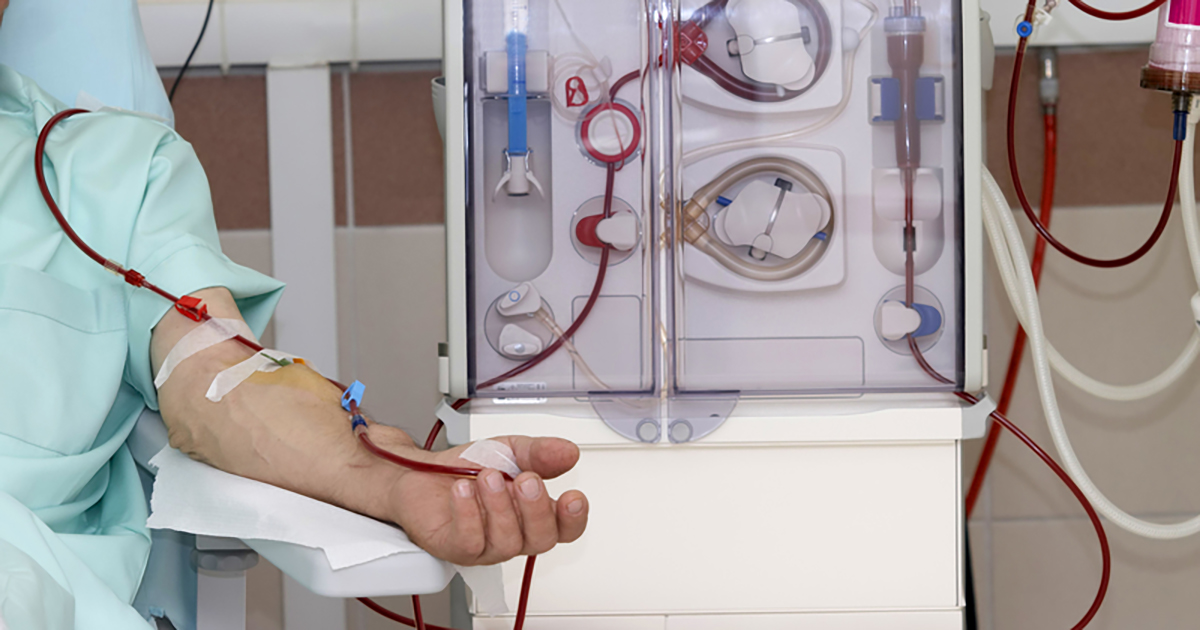What Increases The Risk Of Calciphylaxis?
Calciphylaxis is an uncommon but serious disease where calcium builds up in the small blood vessels of skin and fat tissues. Often times, calciphylaxis occurs in patients who have had a kidney transplant, who have kidney failure and are on dialysis, or who have end-stage renal disease. This disease manifests in the form of skin lesions on areas of the body that contain a higher content of fat, such as the lower limbs, abdomen, buttocks, and breasts. These skin lesions do not heal and become painful nodules and ulcers.
Other symptoms that occur in patients who have calciphylaxis include weakness, depression, fatigue, body aches, and cramps. This disease can be diagnosed using a biopsy of the skin, blood panels, kidney function tests, and liver function tests. While all the causes of calciphylaxis are not known, there are numerous factors that increase an individual's risk of developing the disease.
Long-Term Kidney Dialysis

Any patient being treated with long-term kidney dialysis will be at an increased risk for developing calciphylaxis. Dialysis is used to treat individuals who have kidneys that do not filter the blood effectively enough to keep waste and fluid from building up to dangerous levels in their body. This treatment is used for chronic kidney disease, short-term kidney impairment, and for patients with end-stage renal disease awaiting a kidney transplant. The way treatment with dialysis puts patients at a higher risk of developing calciphylaxis is hypocalcemia, hyperphosphatemia, hyperparathyroidism, elevated calcium-phosphorus product, and vitamin D deficiency are all very common in dialysis patients.
Because dialysis is not a perfect replica of the human kidney, these types of nutrient imbalances can occur. The result is the body's metabolism of calcium and phosphorous become severely dysregulated. Because the body is unable to modulate and manage the synthesis of these nutrients in some dialysis patients, they will have a higher risk of developing calciphylaxis.
Uremia

Uremia is a medical condition that occurs when the kidneys fail to filter the blood of wastes that would normally be eliminated through the urine. The translation of this term is 'urine within the blood.' Uremia patients will typically have increased levels of creatine, proteins, and other substances within their blood. Having this condition can significantly raise the risk of developing calciphylaxis. The way this happens is uremic toxins build up in the blood, prompting an increase of excessive reactive oxygen species (ROS) in the blood.
Elevated levels of ROS in the blood vessels can result in endovascular fibrosis or the hardening and scarring of the blood vessel interior due to an overgrowth of cells. Uremia also causes a significant decrease of factors in the blood that inhibit the calcification of proteins to the inner blood vessel walls. In addition, uremia promotes the development of calciphylaxis because the excessive ROS in the blood induces an inflammatory response by the immune system. This inflammatory response has detrimental effects on the tiny blood vessels that appear in the skin and fatty tissues that are also involved in calciphylaxis.
